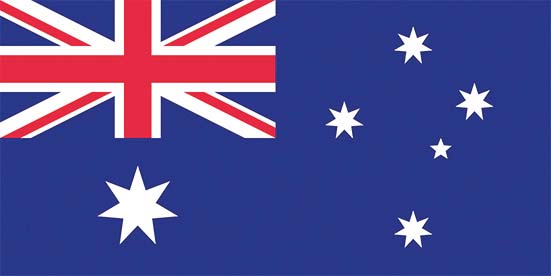
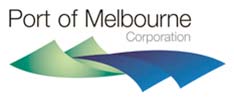 The growth of Melbourne as a city was closely linked to migration from Great Britain and the discovery of gold to the west of the city in the 1850s. Melbourne boomed into a small town within a decade that supplied the entrepreneurs and gold prospectors. The downtown area that is still called the Golden Mile gave some of the inhabitants of Melbourne, the capital of Victoria State, grand mansions and great wealth. Flinders Street as the closest street to the Yarra river and to the east of the present docklands on the north bank of the river, grew into a booming street of shops one mile in length. It was named for the explorer Matthew Flinders, who was erroneously credited with discovering Port Phillip and the extensive bay at the time of its naming.
The growth of Melbourne as a city was closely linked to migration from Great Britain and the discovery of gold to the west of the city in the 1850s. Melbourne boomed into a small town within a decade that supplied the entrepreneurs and gold prospectors. The downtown area that is still called the Golden Mile gave some of the inhabitants of Melbourne, the capital of Victoria State, grand mansions and great wealth. Flinders Street as the closest street to the Yarra river and to the east of the present docklands on the north bank of the river, grew into a booming street of shops one mile in length. It was named for the explorer Matthew Flinders, who was erroneously credited with discovering Port Phillip and the extensive bay at the time of its naming.
Matthew Flinders (1774-1814), a Lincoln man, left Portsmouth in 1795 on Reliance commanded by Capt. Henry Waterhouse with George Bass, also from Lincoln, as ship’s surgeon with the purpose of conveying Capt. John Hunter as the new Governor of Port Jackson (Sydney). The two intrepid mariners, Flinders and Bass, made many discoveries around the south east corner of Australia, with the Bass Strait named after George Bass. Flinders arrived back in August 1880 at Portsmouth, and on a second voyage on Investigator he sailed in 1801 and arrived at Cape Leeuwin on the south west corner of Australia in December 1801. Flinders then accurately charted the coast of the Great Bight, the Eyre Peninsula, Spencer Gulf and Kangaroo Island, and while he may have entered Port Phillip Bay there is no evidence that he landed there as he wintered at Port Jackson (Sydney). He then drew up accurate charts for the coast of Queensland and the Great Barrier Reef, but was unfortunately imprisoned by the French Governor of Mauritius when he put in there for supplies. After seven years, he was released and returned to Portsmouth where he died in 1814.
The large Flinders Street central railway station with its grand portico and next to busy road public transport services is located at the intersection of Flinders Street and Swanston Street. Other landmarks on Flinders Street include Federation Square, St. Paul’s Cathedral, the old Herald and Weekly Times newspaper offices, Melbourne Aquarium and Batman Park, lying next to the Yarra river. It was also once home to Melbourne Fish Market, an ornate building similar to Flinders Street Central Station dating from 1890, but demolished during 1958/60.
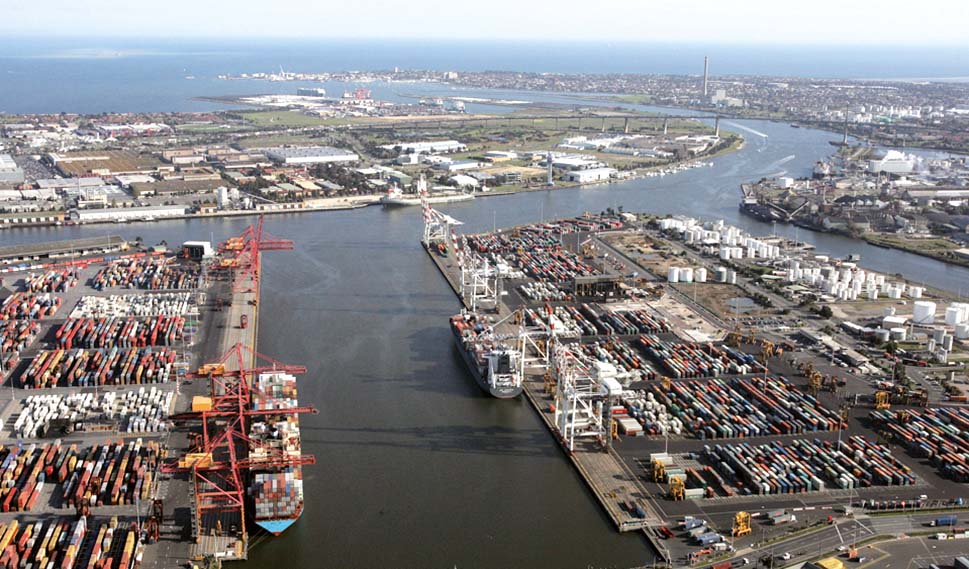
History Of Melbourne Port
Melbourne was founded in 1834 by John Batman, the son of a New South Wales convict, who arrived in the schooner Rebecca and entered into a form of sale treaty with local tribal elders, payment being by axes, blankets, scissors, knives, mirrors, flour and garments. In order to seal the deal a handful of earth was poured from the hand of a local tribal elder into his palm. He left after a few days for Launceston to organise a larger expedition, but while he was away, John Pascoe Fawkner arrived from Launceston with another expedition and landed at the north end of Port Phillip Bay. On a second voyage later in 1835, Fawkner landed two cows, two calves and two horses, and took control of the site of the future location of Melbourne. Melbourne became the capital of the smallest and most densely populated State in Australia, Victoria. It has 71% of the State’s 5.2 million people, and was then permanently settled in the late 1830s by British farmers arriving in the Yarra river. The discovery of gold in 1851 led to ‘gold fever’.
No fewer than 153 ships anchored in Hobson’s Bay close to the Melbourne beaches in 1853 as news of the gold rush spread. A new wharf of six hundred metres in length was built downstream of Spencer Street a year later and named Australian Wharf. The Hobson’s Bay Railway Company also opened a line in 1854 to link Melbourne to the Railway Pier, later called Station Pier, now the cruise and ferry terminal, at the edge of the bay. British imports from the Empire were running at the modern day equivalent of £150 million per year in 1856, with Australian gold, grain and wool swelling that figure. The population of Melbourne in 1857 was overwhelmingly British, with 68% of the settlers coming from England, Wales, Scotland and Ireland.
Station Pier is the main passenger terminal of Melbourne with the greatest sentimental association for the many migrants who arrived by ship in the 1950s and 1960s, including the ‘Ten Pound Poms’ on assisted passages. The Australian Army and Navy personnel used the pier during World War II, as part of its continuous operation since 1854. The Spirit of Tasmania ferry to Devonport on Tasmania leaves from here, as well as being used for berthing cruise ships and Navy vessels of many nationalities.
The sand bar at the mouth of the Yarra river stopped ships entering, so they had to anchor in Hobsons Bay and ferry passengers and cargo upstream. In 1843, the survey of the Yarra river was completed and the Point Gellibrand Railway Pier was completed in 1859 to allow ships to dock there and transport their goods to Melbourne by rail. The original bluestone embankment led to a timber pier with four rail lines and weight cranes. Two wings on either side accommodated several ships at any one time, but the pier has now been completely remodelled as part of a large oil handling facility. A Tide Gauge House recorded the depth of water at the mouth of the Yarra river until 1955, but is not now needed and it was removed to Commonwealth Reserve in Nelson Place, Williamstown.

As trade increased, the need for a harbour authority was called for, culminating in the formation of Melbourne Harbour Trust in 1877. ‘The Rip’ channel at the entrance to Port Philip Bay at Port Phillip Heads was deepened by explosives in 1883 and the Lonsdale Point Lighthouse erected there. The English engineer Sir John Coode recommended an improvement to the flow of the Yarra river by building a canal to alter the course of the river by eliminating a loop in the river. This gave much improved access for ships, the canal being opened in 1887 and deepened to 25 feet and widened to 145 feet fifteen years later. West Melbourne Dock, (now Victoria Dock) was opened to shipping in 1893. An outbreak of typhoid fever in Melbourne killed more than four hundred citizens and incapacitated thousands more. The first car arrived in Melbourne in 1900, having been manufactured in 1897 as the ‘Pioneer’ brand by a syndicate of Bathurst businessmen in New South Wales.
Sir J. Madden was the Colonial Governor of Victoria State when the British Parliament passed the Commonwealth of Australia Act, which came into force on 1st January 1901 with Australia then a member of the British Empire with its capital at Melbourne. The five States of Australia had united in a Federation, with the Northern Territory joining the Federation in 1912, and rivalry between Sydney and Melbourne was solved by moving the capital of Australia to Canberra in 1927. However, the gulf between the rich and privileged, typified by the grandest Parliament House outside Westminster, and the poor and convict immigrants could not have been greater. The Melbourne Club became the temple of the Victorian establishment with fine dining, together with the nearby racecourse holding the Melbourne Cup classic, and the facilities of the exclusive Metropolitan Golf Club, as well as their country houses in the Yarra Valley and the Ferntree Gully hills.
The American ‘Great White Fleet’ arrived at Melbourne in 1908 as part of the aim to project U.S. naval power by President Theodore Roosevelt. Prince’s Pier was another railway pier next to Railway Pier when opened in 1915. During World War I, enlisting employees of the Harbour Trust had their pay made up to a value of £200 by adding the difference between military pay and the their normal pay. Troop carriers left from Railway Pier in 1915 for Gallipoli, and by a year later a total of 220,000 men had been sent overseas to fight for the Allies. The heroism of the Australian and New Zealand Army Corps (ANZAC) at Gallipoli marked the beginning of an Antipodean identity. The absence of many of the Harbour Trust staff on war duties meant that the 1916 Annual Report was not published until the end of 1917.
Peace and the troops and Harbour Trust staff had returned by 1919, with the Harbour Trust becoming the eighth largest deep water port in the British Empire by the mid 1920s with a staff of one thousand. However the Depression between 1930 and 1935 reduced this staff total to only half of its former size. Riots amongst the unemployed in Melbourne were quelled when the Chief Commissioner of Police used mounted troopers. The Australian pound was devalued after a run in withdrawals in April 1931 caused the Government Savings Bank of New South Wales to suspend trading. Sir Otto Niemeyer, a director of the Bank of England, had earlier arrived by a P. & O. liner in June 1930 to advise the Government on financial measures and came up with the ‘Melbourne Agreement’. This was put to a conference in Melbourne on 21st August 1930, with the Government advised to take action by stopping borrowing and cutting spending.

Railway Pier was realigned in 1930 and renamed Station Pier at a cost of £624,375 including dredging of the main channel to Port Phillip Bay and also around the pier to a depth of 10.4 metres. Cruise ship arrivals at Station Pier during the inter war years included the three funnelled Reliance 19,980/15, built as Limburgia for Royal Holland Lloyd, and Resolute 20,200/20, built as Brabantia for Royal Holland Lloyd, of United American Lines. The three funnelled P. & O. liners Strathnaver 22,270/31 and Strathaird 22,544/32 carried Prime Minister Lyons and Attorney General Robert Menzies to the silver jubilee celebrations of King George V in 1935. Robert Menzies later succeeded Lyons as Prime Minister in 1939, and began preparations for the defence of Australia in wartime.
Port Phillip Heads was dredged to a depth of 48 feet in 1941 by a fleet of six dredgers including the clay cutting suction dredger D. York Syme 651/31, non propelled bucket dredgers and nine hopper barges, mostly purchased from Foremost Dredging Ltd. of London. During World War II, the Harbour Trust provided engineering expertise to other strategic ports in the north, including Darwin, which was heavily bombed by the Japanese, and Townsville and Cairns in Queensland. The Australian Second Army provided local protection to Melbourne and Victoria, and with the threat of invasion, war plans were drawn up to include the destruction of the ports of Melbourne and Geelong, the latter in the south west of Port Phillip Bay. This included blowing up dredgers, ferries and tugs and scuttling larger ships at the entrance to the port. Station Pier and Prince’s Pier would also be blown up, coal stocks burnt and oil supplies discharged and ignited.
A post-war program of harbour development and reconstruction was begun in 1945, with the Harbour Trust increasing harbour security, fire fighting capability and plans for new docks. The reconstructed Breakwater Pier was opened in 1955 with the ‘supertanker’ Stanvac Australia of 26,000 dwt berthing there, and Station Pier hosted the one millionth post-war immigrant. The port saw the arrival of H. M. The Queen in 1956 on the Royal Yacht Britannia, as well as the competitors for the Melbourne Olympic Games of 1956, and the new Appleton Dock was opened.
The passenger and vehicle service to Devonport in Tasmania began in September 1959 from Webb Dock by Princess of Australia of 3,964 grt owned by the Australian National Line and completed by the State Dockyard at Newcastle (NSW). She was sold in October 1972 to the Canadian Ministry of Transport for Canadian service, becoming Marine Cruiser in 1975 and Majorca Rose in 1983. The clearance of the swampy marshland of Coode Island to accommodate the liquid bulk trades began in the early 1960s, and Gellibrand Pier was remodelled and reopened for crude oil tankers in 1963 at Williamstown. Plans were announced in 1965 by Victor Swanson, Harbour Trust Chairman, to establish a dedicated container ship dock in Melbourne. He had visited international ports as Vice President of the International Association of Ports and Harbours (IAPH) as the world was gearing up for the container era. The first container berth was opened at Swanson Dock West in 1959 by Sir Rohan Delacombe, Governor of Victoria, with Encounter Bay of Overseas Container Line (OCL) as the first international ship, and Kanimbla of 11,004 grt as the first coastal ship. The latter ship was owned by McIlwraith McEacharn Ltd. of Melbourne and had been completed in 1936 by the Belfast yard of Harland & Wolff Ltd. with accommodation for 357 passengers and 5,650 tonnes of cargo.
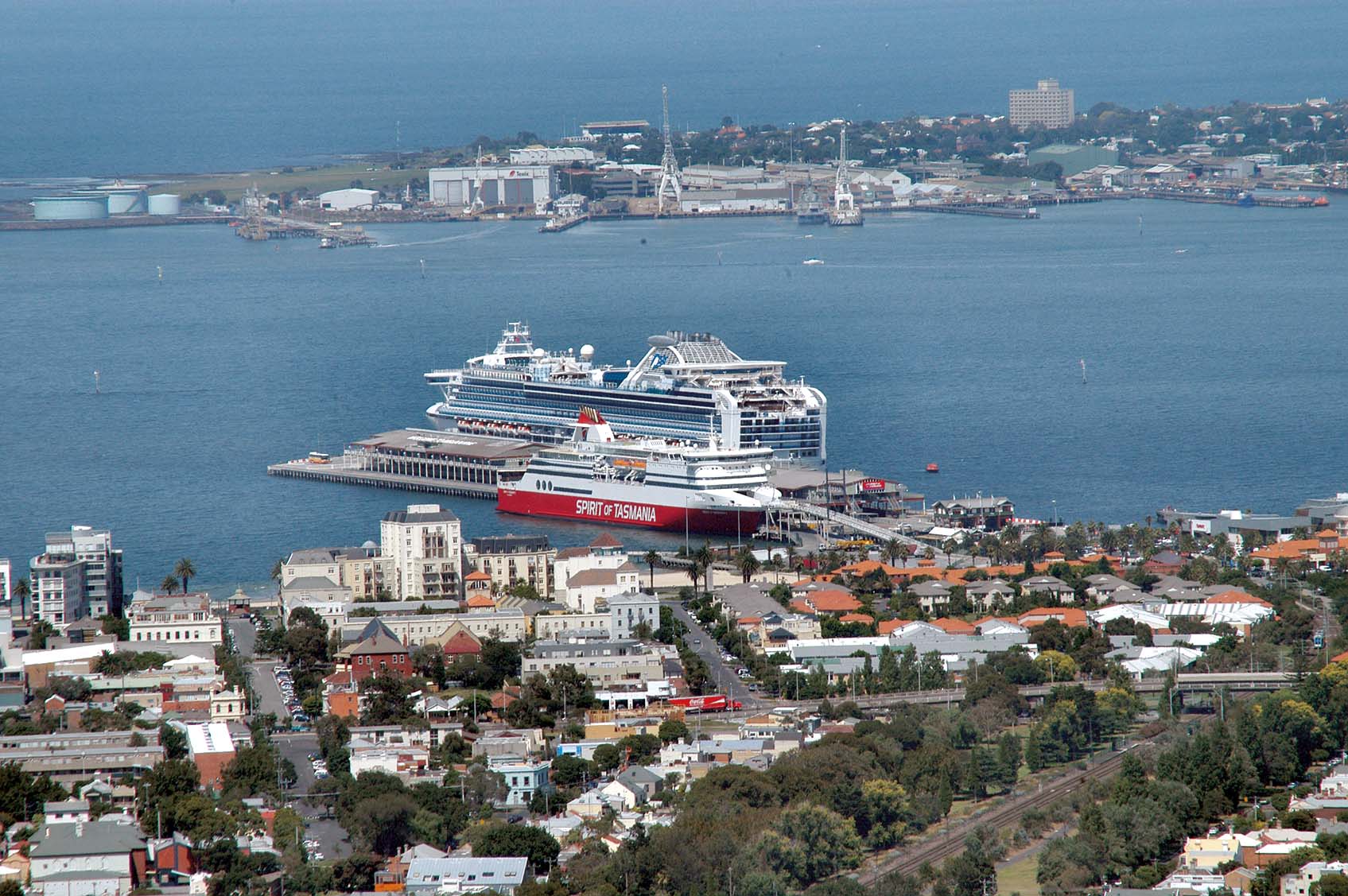
Port Of Melbourne Authority
The Melbourne Harbour Trust became the Port of Melbourne Authority (PMA) in 1978, with port relationship links to the port of Osaka and later to four other ports in Japan and China and two in the United States of America. The total number of PMA personnel in 1984 had increased to 1,470. The Authority owned forty auxiliary craft, including a 120 tonne floating crane, clay cutting suction dredgers, grab dredgers, bucket dredgers, hopper barges, motor launches and inspection craft, five diesel tugs, two pile barges and several lighters.
The Webb Dock rail line was completed in 1985, but the Tasmanian passenger services were switched to Station Pier. The rundown of the old central docks on the Yarra river continued during the 1980s, and this dockland area was planned for redevelopment as a city recreation area by 1994 with the Bolte Pedestrian Bridge becoming the upstream boundary of the port. The PMA changed its name again to the Melbourne Port Corporation (MPC) in 1996, shortly before the one million containers per year mark was reached in the port in 1997. The Moonee Ponds Creek realignment for the redevelopment of Victoria Dock was completed in 2002. The container berths handled two million containers during 2007, and dredging was started for the Channel Deepening Project. The completion of the Dynon Port Rail Project in 2008 involved grade separation of Footscray Road and the rail line, and won the National Infrastructure Project award of the year.
International relations between the U.S.A. and Australia were strengthened by the visit of Hilary Clinton, U.S. Secretary of State, to Melbourne in 2010. Work on the Port Capacity Project began in 2013 to accommodate forecasted growth in the container and automotive trades. This project represents the largest landside development of port infrastructure in a generation. Station Pier handled 180,000 passengers during the 2012/13 season with three dozen cruise ships calling. Port expenditure on new infrastructure is now around one million dollars per week, and a new Port Operations Control Centre was opened in 2014. Legislation for the Port of Melbourne to be leased to the private sector for a medium term of ten years was introduced in the State of Victoria Parliament in May 2015.
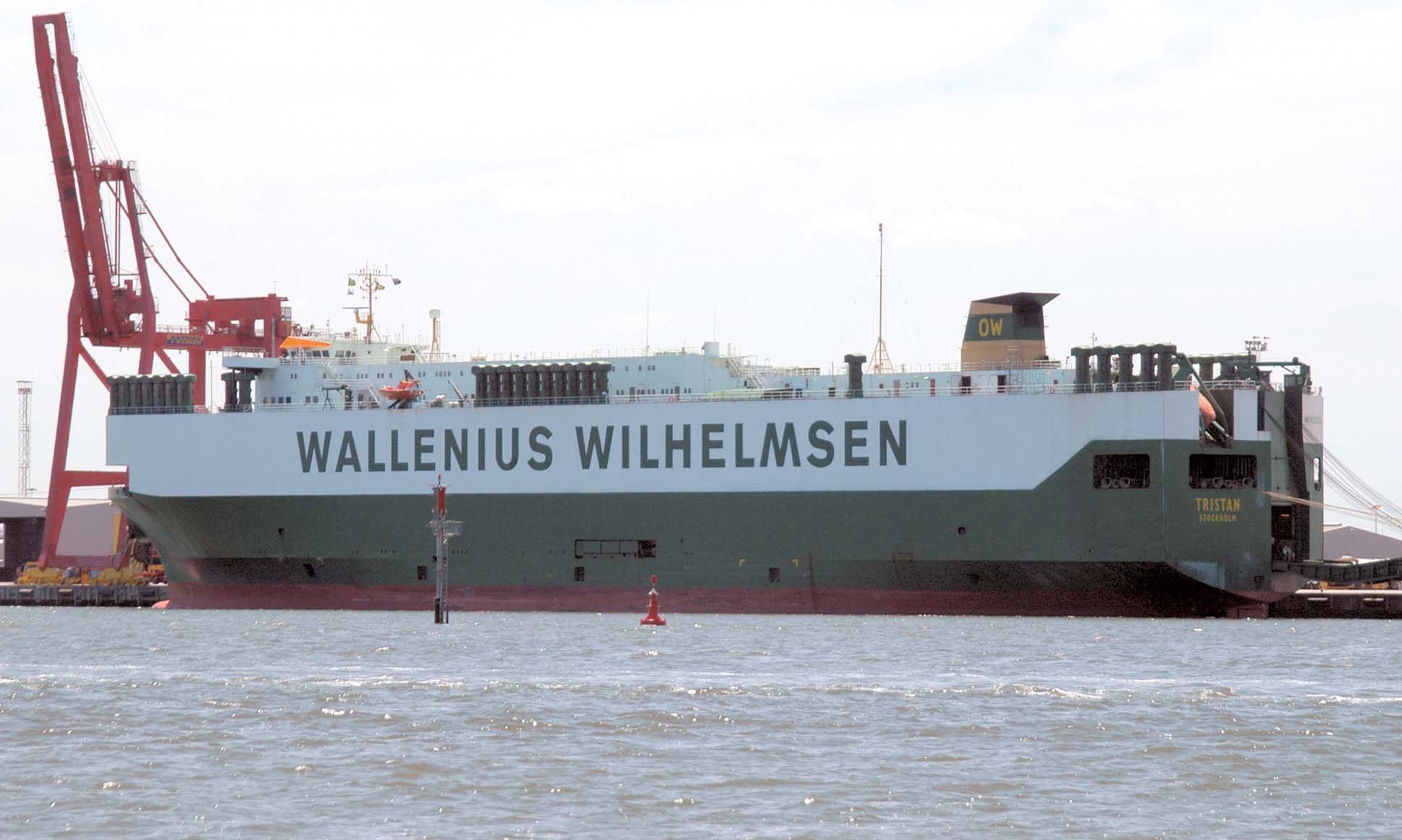
Melbourne Port Trade Figures For 2014/15
- Container traffic – 23.6 Mtonnes and 2.58 MTEU
- Dry bulk traffic – 3.9 Mtonnes
- Liquid bulk traffic – 5.1 Mtonnes
- Cars and vehicles – 265,000 imported and 84,000 exported
Total non container traffic was 11.1 million tonnes out of a total of 34.7 million tonnes traffic. The main imports are manufactured goods, cement, gypsum and sugar, and the main exports are wheat, canola, barley and scrap metal. The port has 36 commercial berths, seven kilometres of quay with two billion dollars of investment in the last decade. Some 3,200 ships visit the port annually including container ships of Maersk Line, ANL Container Line, APL, Austral Asia Line, COSCO, Hamburg Sud, Hapag Lloyd, Evergreen, Hyundai, NYK, ‘K’ Line, MSC, CMA CGM, Marfret Compagnie Maritime, MOL, OOCL, Pacific International Lines (PIL), Pacific Asia Express, Pacific Forum Line, Swire Shipping, Sinotrans Container Line, Yang Ming Line and Australian regional lines. The port has the following dock systems:-

Swanson Dock East
The international container dock is operated by Patrick Container Ports on a 24 hour seven day week basis. It covers forty hectares and has four berths of length 2,905 feet and an alongside depth of 39.7 feet. The dock is equipped with eight cranes including three post-Panamax gantry cranes of up to 80 tonne lift capacity. There is open storage for 6,500 TEU of containers and plugs for 1,004 reefer containers. Rail sidings of 2,100 feet can store many more containers for onward transport.
Swanson Dock West
The international container dock is operated by DP World and is of 34 hectares in area and operates on a 24 hour seven day week basis. Bunkering via barge, fresh water and minor repairs are all available to ship arrivals. The four berths total 3,907 feet with alongside depth of 43 feet and maximum draft allowed of 39.7 feet. There are eight container cranes including three post-Panamax gantry cranes of up to 100 tonne lift capacity. The terminal also has 48 straddle carriers, open storage for 3,917 TEU of containers and plugs for 778 reefer containers. Rail sidings of 1,675 feet can store many more containers for onward transport.
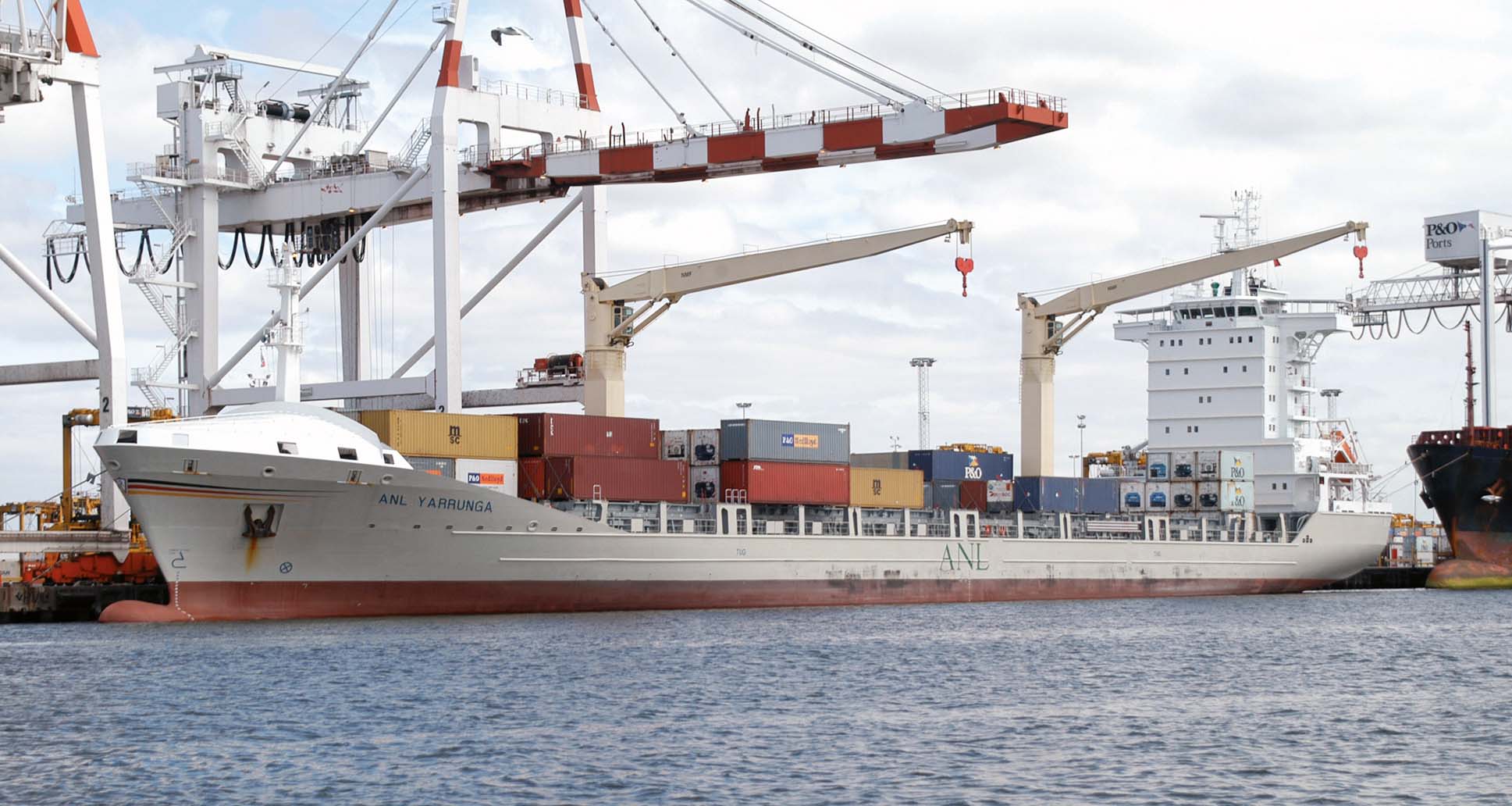
Webb Dock
The dock is operated by Patrick Stevedoring and is of 36.2 hectares in area with several berths. Berth 3 is 690 feet long with maximum alongside depth of 32 feet and maximum allowed draft of 30.8 feet. Berths 4 and 5 are 1,740 feet in length with maximum allowed depth of 41 feet and maximum allowed draft of 39 feet. Covered warehouse area is 4.4 acres, and the east and west parts of the dock have two container cranes of 40 tonne capacity and 50 tonne slewing capacity, and there are eighty reefer container plugs. Ro-ro cargoes, timber, wood pulp, newsprint and project cargo of all sizes are also handled, with numerous forklifts, ramp vehicles and prime movers for internal movement of cargo. Large PCC (Pure Car Carrier) and PCTC (pure Car and Truck Carrier) automobile carriers of up to 8,500 car capacity e.g. Hoegh Target of Hoegh Autoliners and vessels of Wallenius Wilhelmsen Logistics also use this dock at four berths, and there is open storage for 23,500 cars plus pre-delivery inspection and car repair facilities. SeaRoad Shipping, formed in 2007, operated two ro-ro vessels in the Bass Strait coastal trades in Searoad Tamar of 492 feet in length with a draft of 21.7 feet, and Searoad Mersey of 391 feet in length with a draft of 18.0 feet. Searoad Mersey was replaced in 2016 by the larger new ro-ro Searoad Mersey II, launched on 3rd June 2016 at the Flensburger yard in Germany, joining the Bass Strait service in December 2016 and powered by liquid natural gas (LNG). Toll Shipping operate two ro-ros carrying containers and break bulk cargoes from Webb Dock to McGaw wharf at Burnie on northern Tasmania in Tasman Achiever and Victorian Reliance, both of 605.6 feet in length and a draft of 20.7 feet. Webb Dock was named in honour of former Melbourne Harbour Trust commissioner J. P. Webb OBE, who was Chairman and Managing Director of the Victorian Producers’ Co-operation Co. Ltd., and was appointed to the Harbour Trust in 1941 as an exporters’ representative.

Victoria Dock
This is a multi-purpose dock with a variety of services offered including warehousing, container stuffing and destuffing, open storage with direct access to road and rail transport and customs services. Storage capacity includes a 1.4 acre shed and 4.3 acres of warehouse space, and rail sidings offer another 160 TEU of container storage for onward transport.
Appleton Dock
This dock has five berths of one kilometre in length for general cargo, dry bulk and breakbulk cargo. Cars, vehicles and agricultural equipment are also handled at this dock just upstream and opposite the Swanson Dock. The dock is operated by P. & O. Automotive and General Stevedoring to handle project cargo of steel, timber and out of gauge cargo. Maximum alongside depth is 35.1 feet and maximum allowed draft is 33.1 feet. The total shed area is six acres, with numerous forklifts, trailers, container lift carriers and space for 900 TEU of container storage with 72 plugs for reefer containers. Berth F is the Port of Melbourne common user facility handling grain. The berth is 263 metres long with an alongside maximum depth of 11.4 metres and maximum allowed draft of 10.8 metres.
South Wharf
This wharf has seven berths with a total length of 914 metres and alongside depths of between 9.4 and 11.6 metres. Wharves 26 and 28 handle bulk cement, and wharf 29 handles direct to road cargoes only. Wharf 27 is a common user wharf, and wharves 30 and 31 are used by Svitzer tugboats. Wharf 33 contains two cement terminals and a common user berth of 210 metres in length with a maximum alongside draft of 11.0 metres. The other wharves can accommodate vessels up to 215 metres in length with an alongside depth of up to 10.4 metres. Pilotage is compulsory and is provided by Port Phillip Sea Pilots Pty.
Yarraville Dock
This is a bulk cargo dock specialising in handling sugar, gypsum, cement, fly ash, meals, fertilizer and other bulk cargoes. There are four long berths with a maximum alongside depth of up to 38.1 feet and a maximum allowed draft of up to 36.1 feet.
Oil Terminals
Gellibrand Pier at Williamstown has two oil berths, with the pier 820 feet in length with maximum alongside depth of 47.9 feet and maximum allowable draft of 45.9 feet. The oil terminal receives crude oil and exports refined products. The Maribyrnong Dock is a common user Port of Melbourne oil terminal, dedicated for night arrivals of tankers, especially of Stolt-Nielsen Transportation, of up to 590 feet in length with a maximum draft of 30.8 feet. The Holden Dock is another common user oil berth for tankers up to 656 feet in length and with a maximum draft of 39.7 feet.
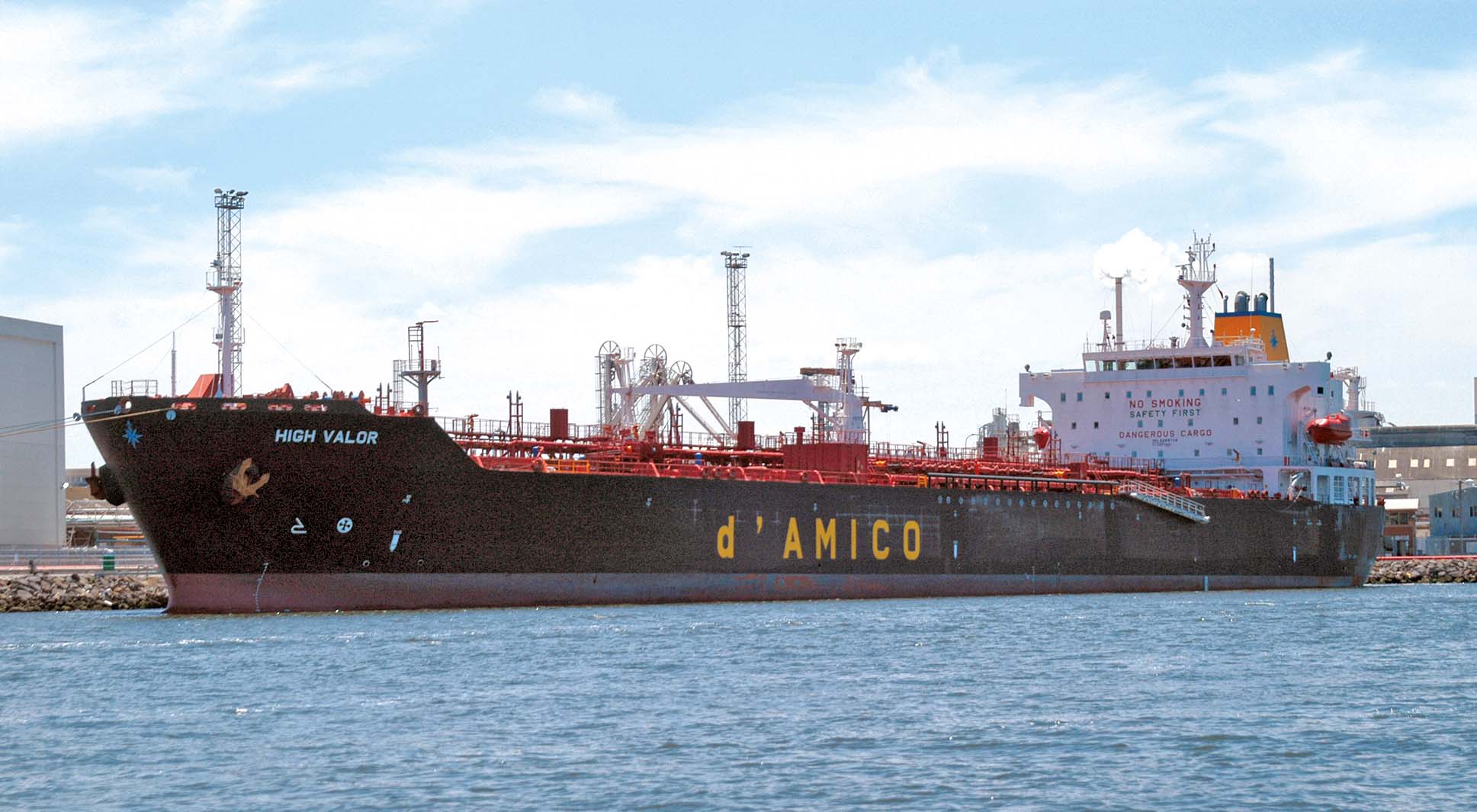
Cruise Terminal
Station Pier was lengthened twice during its long history after opening in 1854 as the Railway Pier, and today it has been extended to four operating berths with vehicle access through a central roadway, and has two terminal buildings. The wharf is 3,061 feet in length and the Inner East Berth is 656 feet in length and is reserved for the Spirit of Tasmania ferry service across the 257 mile Bass Strait to Devonport Esplanade on Tasmania. The Outer East and Outer West Berths are for international cruise ships and are 732 and 1,001 feet in length respectively, while the Inner West Berth is for smaller vessels of up to 344 feet in length. The Cunard Line cruise ships Queen Elizabeth 90,901/10 and Queen Victoria 90,049/07 are regular callers, while the larger Queen Mary 2 148,528/03 used the Outer West Berth on her visit to the port on 17th February 2014.
Container Services
The Port of Melbourne has container services supplied by several independent container operators that offer container storage, repair and maintenance, and receipt and delivery of empty containers e.g. Allied Container Services Pty, Chalmers Industries Pty, CC Containers Pty, CPC Logistics Pty, and others operating in Patrick Coode Container Park of 9.9 hectares with storage for 12,000 TEU of containers plus reefer container plugs and fleets of trucks for onward transport. P. & O. Terminals Australia (POTA) has two important facilities in the Port of Melbourne and an Intermodal Hub at its Somerton Intermodal Terminal, located 12.4 miles north of the port. The Port of Melbourne West Swanson Intermodal Terminal is a multi-modal rail facility that integrates landside logistics with stevedoring, container stuffing and destuffing, reefer storage, fumigation, inspection and washing. Patrick Port Logistics (PPL) operates as a link between road, rail and stevedoring operations. The service manages the movement of imports and exports between the wharves, container parks, rail heads, and inland terminals. PPL serves the needs of the 22 container lines that call at the port, as well as importers and exporters, with all containers monitored by computer. PPL also provides considerable warehousing and storage in regional areas throughout Victoria State, and manages hazardous cargo and project cargo consignments of unwieldy and out of gauge items. A new Post Panamax gantry crane arrived for PPL onboard the Chinese heavy lift ship Zhen Hua 26 of ZPM Transportation in early 2016.
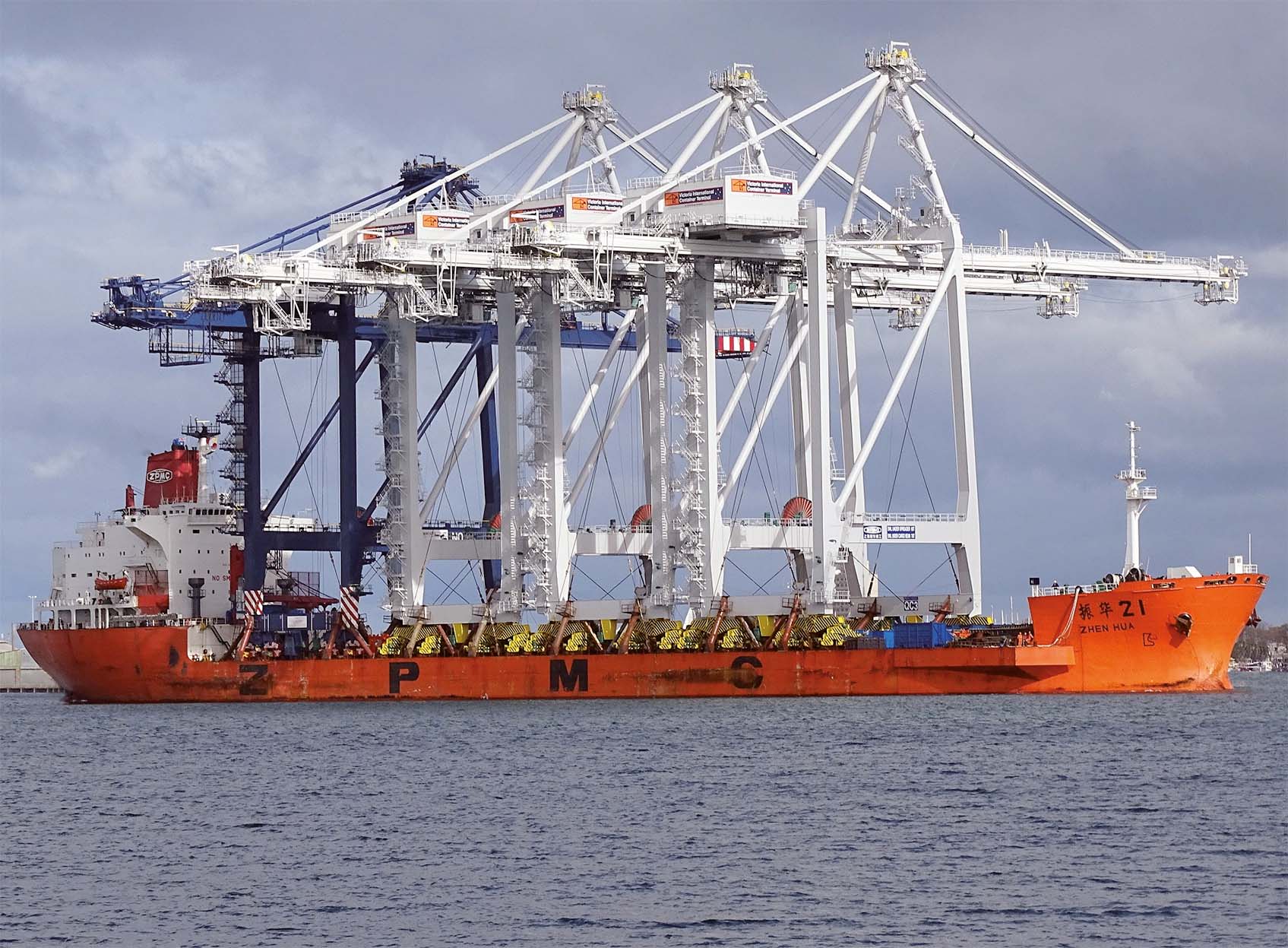
Port Maintenance And Dredging
Capt. Gary Wilson was appointed as Harbour Master in January 2012, formerly working with the Port of Felixstowe, and taking over from Capt. David Shennan. He oversaw the commissioning of the Monash Light Tower at Point Nepean in June 2013, with public access allowed to give very good views over Port Phillip Bay, Mornington Peninsula and the Bass Strait. The tower was named after Sir John Monash, civil engineer of the Melbourne Harbour Trust in the 1890s. Dredging of the entrance channels is carried out in the early part of the year, with the contract dredger Brisbane of 84 metres in length supported by the port hydrographic survey boat John Norgate, and the backhoe dredger Storken used in the north part of the bay and in the docks. The water patrol boat Lonsdale began operations in March 2014 to patrol and warn off small boats from the entrance channel near the main Fawkner Beacon in the north part of Port Phillip Bay. Some of the main facilities of the port are listed as port heritage sites on the Victorian Heritage Register, including:-
- Station Pier
- Gellibrand and Breakwater piers
- Point Lonsdale Lighthouse
- Rear Leading Light at Port Melbourne
- West Channel Pile Light
Melbourne Port Environs
St. Kilda is a fashionable resort area of Melbourne and the lung of Melbourne and has its own Town Hall, and it provides the same function as another Melbourne seaside resort, Sandringham. Mornington Peninsula is a boot shaped area of land over forty miles in length on the east side of Port Philip Bay. It offers a fine mix of wild ocean beaches, fine vineyards in its interior, and culminates in the bayside resorts of Mornington, Sorrento and Point Nepean. The latter is near ‘The Rip’ channel with Point Lonsdale on the west side and through which all of the large container ships pass en route to the Port of Melbourne. There is a small passenger ferry across ‘The Rip’ from Sorrento to Queenscliff. At Point Nepean, one can explore the gun emplacements, tunnels and bunkers of Fort Nepean, which played a very important part in the defence of Melbourne from the 1880s to 1945. On the parade ground are two historic gun barrels that fired the first Australian shots in both World War I and World War II. There are good numbers of British born residents living on the Mornington Peninsula.
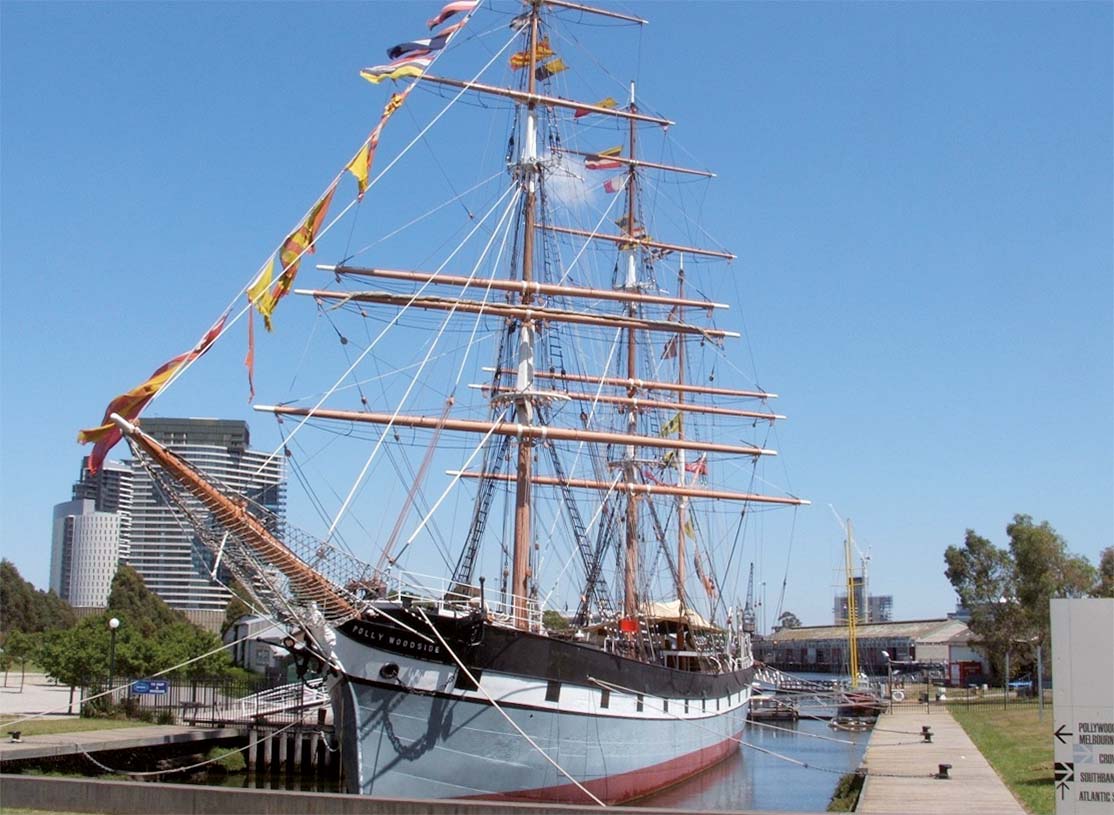
The Melbourne Maritime Museum and the preserved three masted barque Polly Woodside lie at South Wharf just upstream of the Webb pedestrian bridge. The Maritime Museum has lots of attractions including interactive galleries, a souvenir shop, and displays, artefacts and models of Polly Woodside. The barque has been fully restored to her light grey original hull colour and resides in an original wooden walled dry dock, which was used for the repair of ships for over one hundred years. Polly Woodside was launched at Belfast in 1885 and circumnavigated the world seventeen times and travelled 1.5 million nautical miles carrying coal out from England to South America returning with wheat, and wool and grain homeward from South Australian ports.
The Observation Deck of the 88th floor of lofty Eureka Tower, at 830 feet the highest building in Melbourne, is the best way to see the harbour and the city. A short walk to Southgate Wharf enables one to board a Williamstown Ferry boat to the Williamstown suburb at the entrance to the Yarra river on the port side when arriving. Point Gellibrand at Williamstown is home to a magnificent yacht basin, streets full of cafes, and was where the Australian Navy was founded. The Timeball Tower was built by convict labour in 1840 so that vessels could set their chronometers when sailing.
Postscript
The Port of Melbourne is the leading container port in Australia, and to maintain its competitiveness it reduced wharfage for container shipping by 2.5% from 1st July 2016. This reduction will also be applied in each of the years up to 2020 in order to increase both mainland and international container trade through the port. These successive reductions will also be applied by the Victorian Ports Corporation (Melbourne) as the successor organisation to the Port of Melbourne Corporation. The international cruise season from October 2015 to May 2016 concluded with the arrival of the last of 76 cruise ships carrying 225,000 passengers to the Cruise Terminal.
A record number of visits were made by the P. & O. (Australia) cruise ships Pacific Jewel and Pacific Eden, and these two ships plus Voyager of the Seas, Golden Princess and Carnival Spirit berthed for extended stays just prior to the Melbourne Cup horseracing classic in early November 2015.
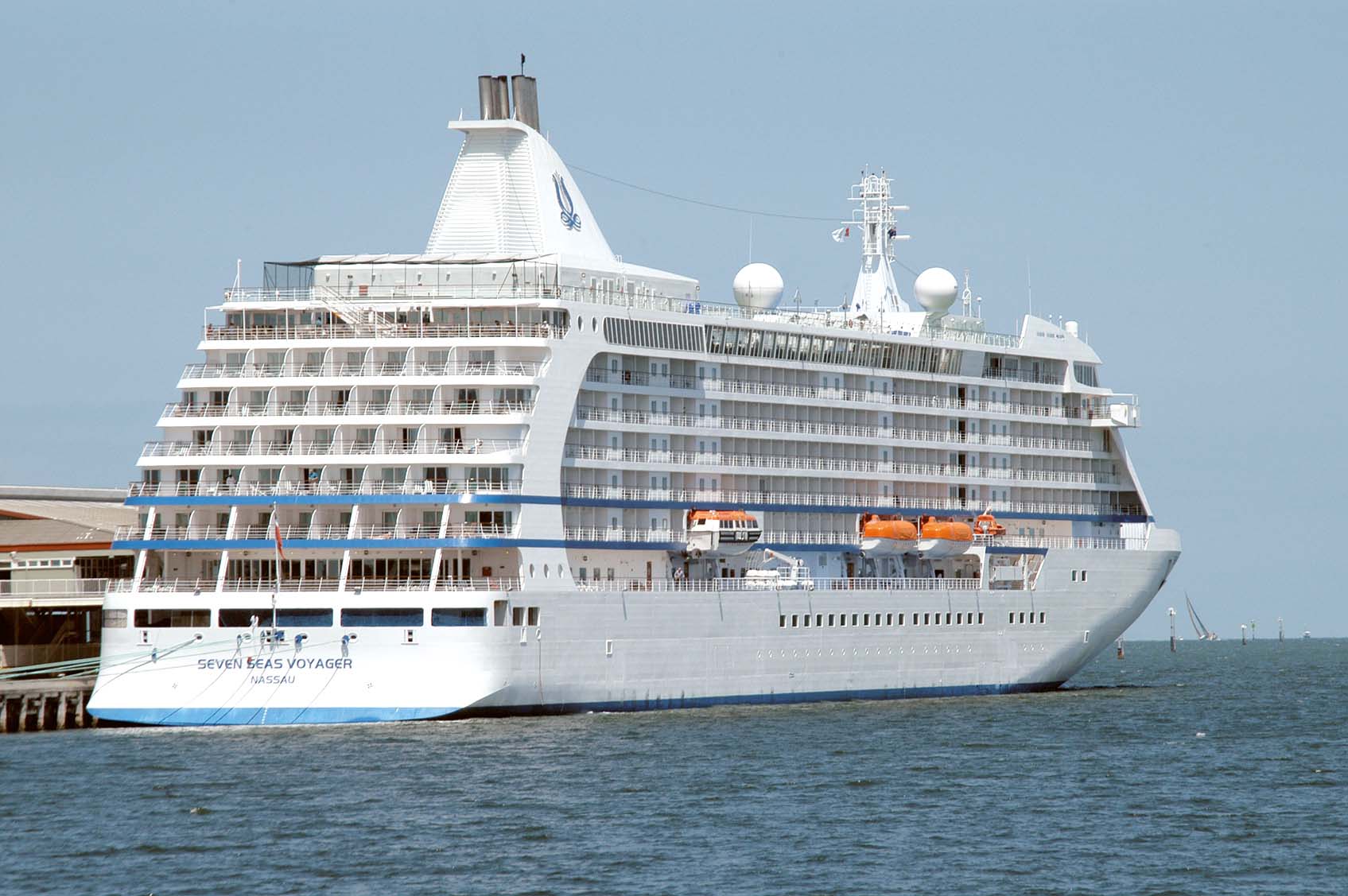
The 2016/17 cruise season will see the arrival of one hundred cruise ships at the Cruise Terminal. Navigation in the Bay anchorage area and entrance channels was improved in 2016 by the erection of the new Murray Tower navigation aid.
The Breakwater Pier is being refurbished, the bulk liquid berths are being upgraded with new fire fighting systems, and four new beacons have been placed in the Transit Only Zone in the mouth of Port Phillip Bay.




Comments
Sorry, comments are closed for this item